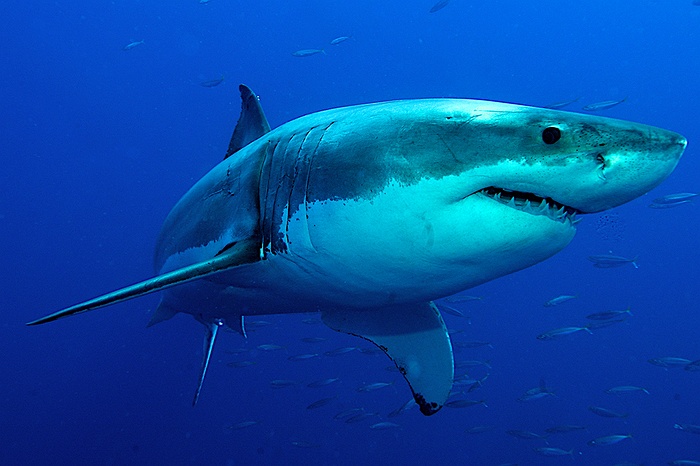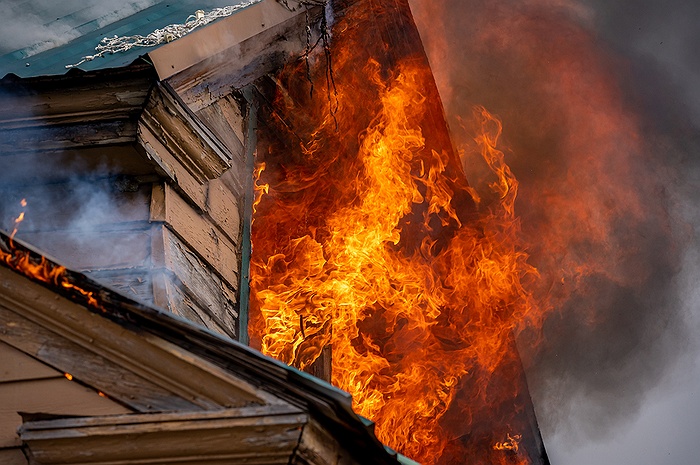
The local government resources will build on existing shark monitoring efforts already underway at state beaches.
Gov. Kathy Hochul announced new shark-monitoring drones will be deployed in local beach communities on Long Island and New York City, building on the state’s previous efforts. Actions taken to address and enhance beachgoer safetyAt State Beach. Governor Hochul also announced that following the establishment of new shark safety protocols this year, the New York State Office of Parks, Recreation and Historic Preservation and the Department of Environmental Conservation have increased surveillance of the waters in response to shark sightings during the National Day holiday.
“New York is home to some of the most beautiful beaches in the country, and I have directed state personnel to do everything possible this summer to keep beachgoers safe,” Governor Hocher said. “Ahead of the busy summer months, we’ve developed new tools and strategies to monitor marine wildlife and protect the health and safety of New Yorkers. These new drones will improve shark monitoring capabilities for local governments on Long Island and New York City, ensuring that local governments Shark detection capabilities.” The beach is safe for all beachgoers. “
The New York State Office of Parks, Recreation and Historic Preservation (State Parks) will distribute the new drones to all cities in the state. It also provides funds to pay for training local personnel to operate the drones. Since most cities do not have drone surveillance capabilities, this investment will help localities and agencies throughout the Long Island coastline and New York City step up their shark monitoring efforts.
State parks held preseason meetings with seaside cities and local agencies this spring to provide updates on shark activity in New York State and discuss coordinating waterfront notifications.In addition, the Department of Environmental Protection (DEC) released last week Guidelines for Reducing the Risk of Negative Shark Interactions.
When there is a shark sighting and/or interaction with a swimmer at a state park beach, swimming is suspended and all swimmers are cleared from the water. Swimming is allowed to resume at least one hour after the last sighting. State park lifeguards, park police and park staff constantly scan and patrol the waters for shark activity.
In addition, the Long Island Shore Awareness Team, comprising more than 200 individuals from municipalities, agencies and private beach operators from Queens to Long Island, is notified so they can take appropriate action within their respective jurisdictions.
New York State Parks Commissioner Erik Kulleseid said, “State park lifeguards, park police and park staff are on high alert at our Long Island beaches to keep visitors safe. We will continue to use all the tools at our disposal to look for sharks and other dangerous marine life.”
New York State Department of Environmental Conservation Commissioner Basil Segos said, “The New York coast is home to wild, natural marine ecosystems that support the annual migration of sharks into our coastal waters. While human-shark interactions are rare, DEC encourages the public to follow shark safety guidelines to help minimize the risk of negative interactions.” Risk this summer with the Sharks.”
New York State Police Acting Superintendent Steven Nigrelli said, “In the event of a sighting or emergency, such as those that occurred over July 4th weekend, NYSP Aviation is ready to provide rapid response and support as needed. Like our state parks and law enforcement partners, the safety of all New York People are our number one priority and we stand ready to assist them and keep beachgoers safe.”
In late May, Governor Hochul announced Enhanced shark surveillance measures For Long Island State Park beaches, which include the state park’s expanded monitoring capabilities:
-
Ten new drones were added, more than doubling the eight drones it operated last year. One of the new drones assigned to Park Police is a large enterprise model equipped with thermal imaging, laser ranging and high-quality cameras for nighttime surveillance and patrolling in adverse weather conditions.The drone could also drop a personal flotation device in an emergency -
Currently, 21 staff members, including park police, state park operators, lifeguards and certified drone operators, are undergoing training. Another 12 staff members have been trained to prepare for this summer. -
State Park Environmental Educators Host Public Awareness Events About Shark Habitat This Summer for People at Jones Beach, Robert Moses and Sunken Meadows -
Two new Yamaha WaveRunners have been assigned to lifeguards patrolling Jones Beach and Robert Moses State Park.The two private boats will join a private boat already in operation at Sunken Meadows State Park -
Created additional buffer zone between swimming area and surf fishing area -
When sightings occur, NYS Police Aviation will respond as needed
To minimize the risk of shark interactions, the Department of Conservation recommends the following Shark Safety Guide:
-
Avoid areas with seals -
Avoid areas with schools of fish, splashing fish or diving seabirds -
avoid swimming at dusk, night and dawn -
avoid cloudy water -
Group swimming, boating and surfing -
Stay close to the shore so your feet can touch the bottom -
Always follow the directions of lifeguards and park staff
Whenever humans venture into any wild environment, whether on land or in water, they face risks. While it is impossible to completely eliminate risk, ocean users can modify their behavior to minimize potential interactions with sharks and reduce overall risk. when in the ocean, Follow DEC’s Shark Safety Guidelines Minimize the potential for negative interactions with sharks.







